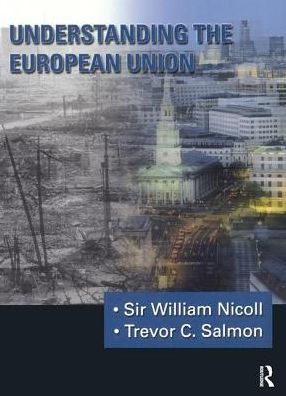Coverage is divided into Five Parts:
- Part One looks at the historical background to European integration up to the end of the twentieth century and raises the question of whether integration has been or will continue to be inevitable.
- Part Two examines the institutions of the Union - how they work, how they interact with one another, and with the member states, and their role in the policy-making process.
- Part Three details the origins and nature of European Community Policies - from the major common policies, to the key economic policies, including EMU, and other important policies including social and employment matters, structural funds and the environment.
- Part Four addresses Pillars II and III, the Common Foreign and Security Policy and Justice and Home Affairs. It also examines the contemporary developments and debate about providing the European Union with an operational military capability.
- Part Five focuses on the attitudes of all the Member States to the central issues of recent Inter-Governmental Conferences, institutional and policy reform and European integration. It also examines the issues of enlargement.
Key features include:
- A unique combination of the expertise of a Brussels 'insider' and an experienced academic and teacher.
- An exploration beyond the basics to an understanding of the broader issues involved in the debate about the European Union and the future of European integration.
- A Glossary of key terms and practices and Discussion Questions to prompt further debate; material on the June 1999 elections and the crisis of the Commission.
Understanding the European Union is an essential textbook for students of the European Union, European Studies, Comparative Politics, International Organisations and international Relations. It is an invaluable guide for anyone trying to understand the workings of Brussels.
Coverage is divided into Five Parts:
- Part One looks at the historical background to European integration up to the end of the twentieth century and raises the question of whether integration has been or will continue to be inevitable.
- Part Two examines the institutions of the Union - how they work, how they interact with one another, and with the member states, and their role in the policy-making process.
- Part Three details the origins and nature of European Community Policies - from the major common policies, to the key economic policies, including EMU, and other important policies including social and employment matters, structural funds and the environment.
- Part Four addresses Pillars II and III, the Common Foreign and Security Policy and Justice and Home Affairs. It also examines the contemporary developments and debate about providing the European Union with an operational military capability.
- Part Five focuses on the attitudes of all the Member States to the central issues of recent Inter-Governmental Conferences, institutional and policy reform and European integration. It also examines the issues of enlargement.
Key features include:
- A unique combination of the expertise of a Brussels 'insider' and an experienced academic and teacher.
- An exploration beyond the basics to an understanding of the broader issues involved in the debate about the European Union and the future of European integration.
- A Glossary of key terms and practices and Discussion Questions to prompt further debate; material on the June 1999 elections and the crisis of the Commission.
Understanding the European Union is an essential textbook for students of the European Union, European Studies, Comparative Politics, International Organisations and international Relations. It is an invaluable guide for anyone trying to understand the workings of Brussels.

Understanding The European Union
572
Understanding The European Union
572
Product Details
| ISBN-13: | 9781138458932 |
|---|---|
| Publisher: | Taylor & Francis |
| Publication date: | 03/28/2019 |
| Pages: | 572 |
| Product dimensions: | 6.75(w) x 9.19(h) x (d) |
